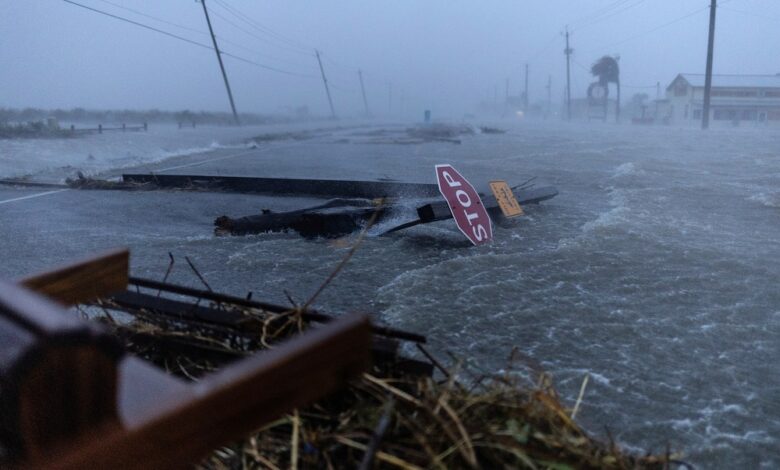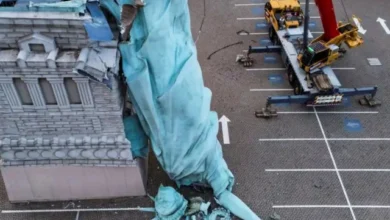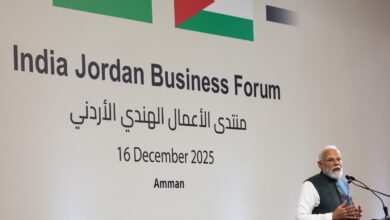
By Pepukaye Bardouille
Special to The Times Kuwait
Earlier this month, Hurricane Beryl swept through the Caribbean, flattening entire islands and causing ‘Armageddon-like’ destruction. As the earliest Category 5 Atlantic storm to form in the Atlantic Ocean, it marks the beginning of what is forecasted to be the most active hurricane season on record.
This is undoubtedly a climate disaster. The torrential rainfall and 150-mile-per-hour winds that flattened the islands of Carriacou, Petit Martinique, and the Grenadines archipelago, along with the storm surge that hammered the coasts of Barbados and Jamaica, were up to 10-30 percent more intense due to human-driven climate change.
Hurricane Beryl’s aftermath should concern financial institutions as much as it does climate scientists, because it reveals how our patchwork development-finance system —designed when extreme weather events were far less catastrophic — is falling short in the face of increasingly frequent and intense storms, floods, and wildfires.
Studies have shown that no matter how rapidly we reduce greenhouse-gas emissions, disasters like Beryl will recur. But small island developing states (SIDS), which are among the world’s most climate-vulnerable countries, currently have access to less than 2 percent of the climate financing pledged to developing countries.
To protect Caribbean countries and other vulnerable regions from the existential risks posed by climate change, the international community must help them build resilience. This requires a more comprehensive approach to delivering financial support before, during, and after extreme weather events.
The most important priority is emergency liquidity in the aftermath of a crisis, so that governments can meet their populations’ most urgent needs and begin disaster-response work. Examples include the World Bank’s loans with a Catastrophe Deferred Drawdown Option (Cat DDO), similar to the Inter-American Development Bank’s (IDB) Contingent Loan for Natural Disaster Emergencies. Because such credit lines are approved in advance, countries can access funds quickly once certain predefined conditions are met.
The Cat DDO fund was vital to St. Vincent and the Grenadines’ response to the 2021 volcanic eruption, providing the country with $20 million in immediate liquidity to support its recovery. Regrettably, this fund expired last year, leaving St. Vincent and the Grenadines without similar financing in the wake of Hurricane Beryl, which destroyed 90 percent of homes on one of its islands.
More broadly, accessibility is a major obstacle to protecting SIDS. Most Eastern Caribbean countries are not members of the IDB and therefore cannot access its loans, underscoring the need for a universal contingent liquidity fund that every climate-vulnerable country can access immediately.
This fund could be capped at a relatively modest amount to ensure that all countries can respond to their most pressing emergencies. Importantly, the contingent loan would be triggered by a national or sub-national government’s declaration of emergency.
Additional ‘top-up’ options like the Cat DDO, or even higher-level coverage through a combination of public support and private solutions, such as debt-payment deferrals, contracts with reinsurers, or parametric risk-transfer solutions, would still be available. But with a universal ‘base-level’ facility, no country would be unable to access emergency liquidity and reconstruction funds. This is why SIDS have unanimously called for the creation of the appropriate financial instruments.
But preparedness can go only so far, and emergency liquidity is ultimately a very small piece of the puzzle. To reduce storm damage and prevent hard-won socioeconomic gains made over decades from being reversed overnight, climate-vulnerable countries must build resilience. For example, Barbados’s recently completed investment plan for prosperity and resilience identifies a need to allocate $11.6 billion to health care, education, housing, and infrastructure, including significant coastal protection, over the coming decade, of which about $5 billion will need to be funded through the public sector. Achieving this goal requires cheaper, long-term financing options.
A much larger share of concessional resources from the multilateral development banks and bilateral donors must be directed toward adaptation, as every dollar spent on making infrastructure more resilient saves $4 in disaster reconstruction. When combined with pre-approved liquidity instruments, like the contingency facility, such investments improve the capacity plan, rather than improvise, humanitarian responses after a storm.
Finally, we must allocate more capital to repairing the damage that climate disasters inflict on economies and populations. Like many Caribbean countries reeling from Hurricane Beryl, SIDS are about 33 percent more vulnerable to external economic and financial shocks than other developing countries. Every year, they suffer $1.7 billion in economic losses attributable to climate change and extreme weather events.
In 2022, at the United Nations Climate Change Conference in Egypt, political leaders reached a landmark agreement to establish a Loss and Damage Fund to provide financial aid to developing countries grappling with the adverse effects of global warming. Since then, with the climate crisis escalating rapidly, the number of countries seeking access to these resources has grown significantly.
Providing the Loss and Damage fund with the resources it needs is crucial to helping these countries rebuild their economies. In 2017, Dominica, where I was born, Hurricane Maria caused $1.2 billion in losses and damages ( 226% of its GDP). Our electricity network was nearly destroyed, 90 percent of homes were damaged, and 85 percent of our forests were lost. By all indications, the damage across Grenada, Jamaica, St. Vincent and the Grenadines, and Barbados was as severe. But with pledges amounting to less than $750 million, the Loss and Damage fund is orders of magnitude smaller than what is needed.
Hurricane Beryl, which has disrupted lives and economies across the Caribbean, should serve as a warning to those determining how much financing is available to climate-vulnerable countries. Piecemeal support is not enough; comprehensive financial reforms are required to strengthen vulnerable countries’ resilience, expand their access to emergency liquidity, and help them recover from physical and economic damage.
As we enter what will likely be the most intense hurricane season in recorded history, these reforms cannot come soon enough.

Pepukaye Bardouille
Special Adviser on Climate Resilience to the Prime Minister of Barbados, is Director of the Bridgetown Initiative.
Copyright: Project Syndicate, 2024.
www.project-syndicate.org













